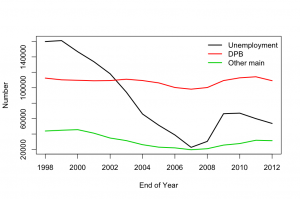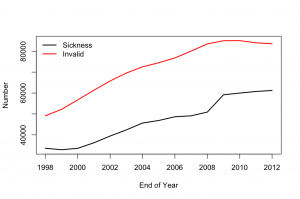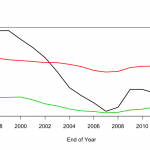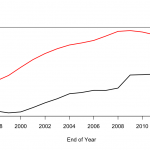Today, from the Herald “More people on benefits as Govt fiddles with job requirements”
Labour spokeswoman for social development Jacinda Ardern said the highest unemployment numbers were at around 10 per cent in the early 1990s but support for solo parents and invalids have hit record highs during Bennett’s reign as Social Development Minister.
Between January 2009 and January 2012, the number of people on the DPB rose by 13.2 per cent. During the same period, the number of people on the unemployment benefit rose by 82 per cent.
Late January, in the Fairfax papers, “Beneficiary numbers in overall down trend”
Staff at Work and Income work hard to identify job opportunities with local employers and connect them with people who’re ready to work,” Mrs Bennett said.
On average Winz put 1000 people into new jobs each week around the country.
In the year to October 2012, 82,000 New Zealanders went off benefits and into work.
Ministry of Social Development website figures show the number of people on the unemployment benefit last month was the lowest December figure since 2008.
Since the actual numbers are a matter of public record, presumably both Adern and Bennett are telling the literal truth, but both of them are being misleading. To start with, you’d have to be suspicious about a trend that’s being quoted up to Jan 2012, which was more than a year ago.
If you at the actual numbers, from the Ministry of Social Development (and work around the fact that they are in a Word document, not some sensible data format), it becomes clear that there are two patterns. For unemployment, Dependent Persons Domestic Purposes, and “Other main” benefits, the main variation is with the state of the economy (strongly, for unemployment, more weakly for the other two). It’s not really possible to tell if the recent changes have had any effect, but it is clear that anyone quoting a difference between two points as if it was evidence is not to be trusted.

Sickness benefit and Invalid’s benefit have been rising, for as long as I can find the numbers, though the rise has flattened off in recent years. This could possibly be evidence for the effectiveness of Bennett’s changes; it really can’t be evidence against them.

Ideally these should have been standardised by population, which increased about 25% over this period, but it doesn’t make much difference, as you can see. Age adjustment would also be useful, but is a lot more work.





